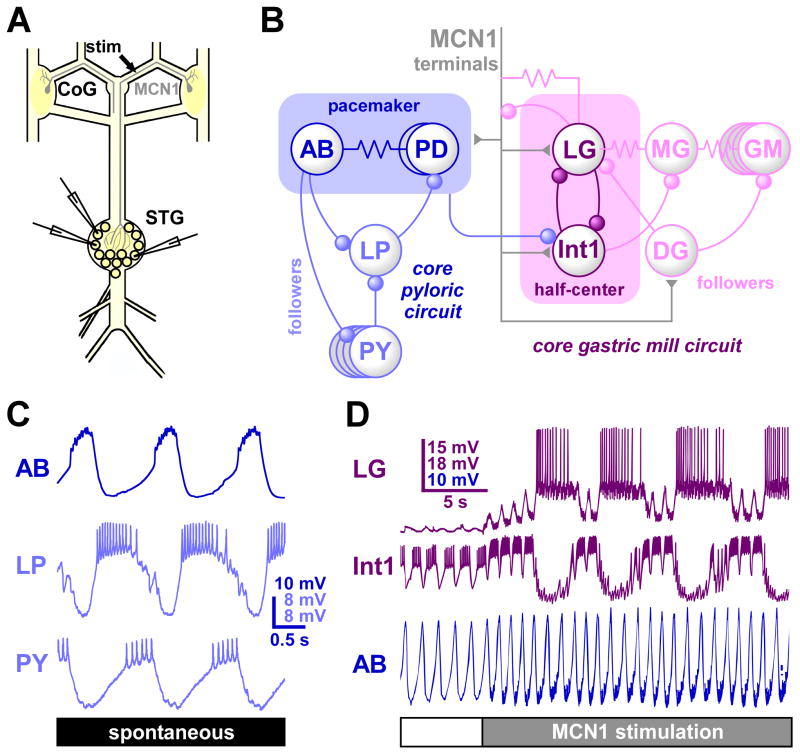Figure 1.
The pyloric and gastric mill central pattern generating circuits of the stomatogastric ganglion. A: Schematic of the isolated STNS. The STG contains the pyloric and gastric mill circuits. The commissural ganglia (CoG) contain the cell bodies of projection neurons like the modulatory commisural neuron 1 (MCN1), which project to the neuropil of the STG. B: The core pyloric and gastric mill circuit diagrams. Not all cells types and synapses are shown. Inhibitory chemical synapses are shown as circles, electrical coupling as resistor symbols, and excitatory inputs from MCN1 as triangles. Rhythm generation is based on intrinsic oscillatory properties of the pacemaker kernel in the pyloric circuit, and on reciprocal inhibitory connections between non-oscillatory neurons (half-center) in the gastric mill circuit. Note that both circuits are interconnected by direct synapses and through feedback to the terminals of projection neurons. C: The typical tri-phasic pyloric pattern. In each cycle, a pacemaker burst is followed by neurons burst in two different phases, in rebound from pacemaker inhibition. D: The bi-phasic gastric mill rhythm is often not spontaneously active, but can be activated by stimulating modulatory projection neurons like MCN1. Note that the interconnection between both circuits leads to substantial pyloric modulation of the much slower gastric mill neuron bursting. The pyloric pacemaker neuron AB is shown as a reference for pyloric timing. A, B, & D are modified from reference [9]; C is modified from reference [8].

